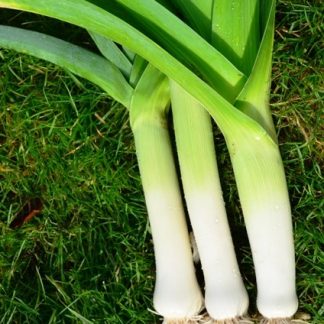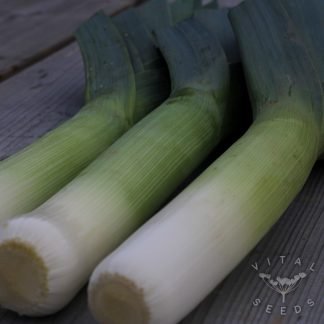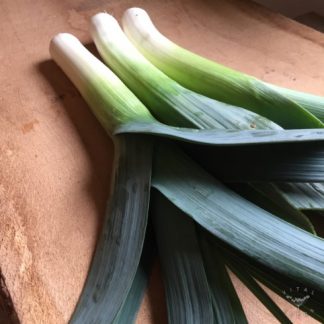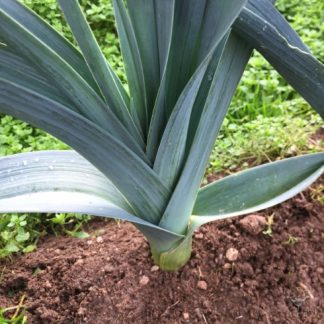How to grow leeks
Download PDFSeed Sowing
Our preferred method of sowing leeks is to use the seedbed method. From February-April, sow seeds 1cm deep in 10cm wide drills, with around 200-300 seeds per metre.
You can also grow leeks in a module tray under cover, sowing 2-3 seeds per cell. For an extended harvest choose a selection of varieties that are ready at different stages, from late summer till spring.
Transplanting
When the plants are about pencil-thick, dig them up carefully and trim the roots to about 3cm long and the stems straight across to about 2/3 of their original length. Dib holes 15-20cm deep and drop one leek into each hole, spacing the holes at 15x30cm. Leave the hole open to give the plants plenty of room and water in the plants well by filling up the hole with water. In very dry spells the holes should be filled with soil to stop the roots from drying out.
If you have sown leeks in modules, plant out to the final growing position at 15x30cm. The leeks will grow to be smaller plants but can be harvested in clumps as and when they are needed.
Plant Care
Water during long dry spells and weed regularly. You can also mulch with straw to keep in moisture and prevent soil from falling in-between the leaves.
You can ridge up the soil either side of the leeks to increase the length of the white shank.
Challenges
Leek rust is a common garden disease causing bright yellow spots on the leaves. Often worse in long, wet periods. Minor rust won’t harm the plants but may affect yield. Make sure to leave at least three years in between alliums in your crop rotation, as once it’s present in your garden there is no way to remove it.
Horticultural mesh can be used to reduce risk of damage from leek moths, a relatively new pest whose caterpillars tunnel into the leaves and can cause rot. If you do spot them in your garden, remove and destroy any infected plants.
Onion white rot is a devastating fungal disease that causes rot and crop loss. After white, fluffy fungal growth, black round structures called sclerotia form and can remain dormant in the soil for 12-20 years. This means it is highly important not to introduce contaminated soil into your garden via tools or footwear.
Harvest
Depending on which varieties you have chosen, start to harvest your crop from mid-summer onwards. Leeks are very winter hardy and can remain in the ground all season until you are ready to use them. Use a garden fork to gently lift the soil around the leek, being careful not to get soil inside the leaves.
Seed Saving
Leeks are a biennial crop, meaning they will produce flower heads in their second year. To ensure viable seeds, save seeds from at least 5 plants and make sure to stake them to prevent them from falling over. The seeds are ready when the capsules in the umbel begin to split open and expose the black seeds inside.






